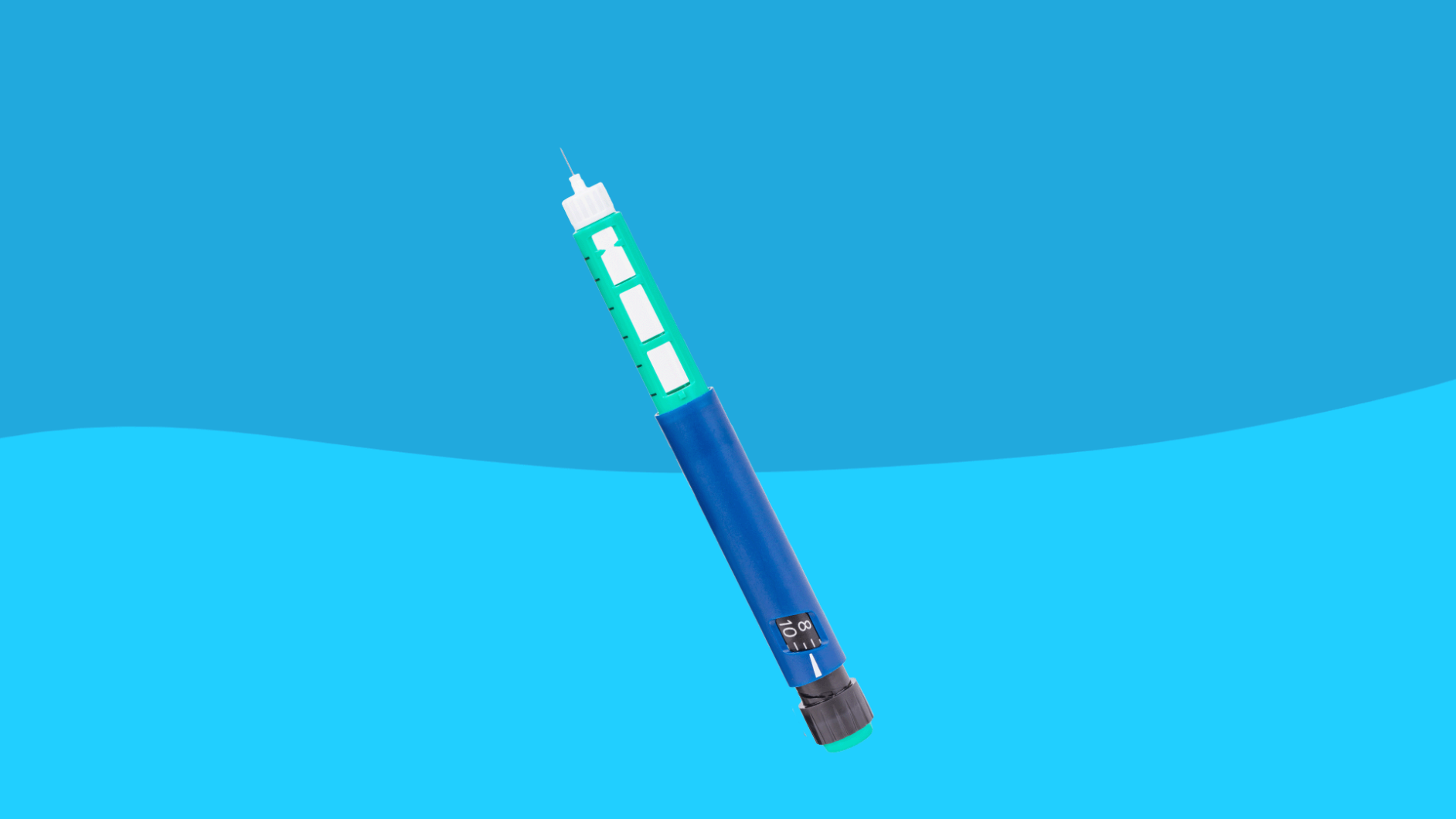For people with Type 2 diabetes, the injectable drug Ozempic (semaglutide) can lower blood sugar, reduce the risk of heart disease, and help with weight loss. It’s a glucagon-like peptide 1 (GLP-1) receptor agonist that works several different ways to manage Type 2 diabetes.
Although Ozempic doesn’t have any direct effect on the neurological system, some people have reported headaches while taking the drug. “In fact, studies of semaglutide show that about 15% of Ozempic patients develop headaches,” says Akhil Shenoy, MD, endocrinologist and medical adviser at Aeroflow Diabetes. A few common side effects of Ozempic, including low blood sugar and dehydration, are likely to blame. Here’s what you should know about why you might experience headaches while taking the Ozempic and what you can do about them.
How Ozempic works in the body
According to Dr. Shenoy, semaglutide mimics the GLP-1 hormone naturally produced in the gut; in doing so, it improves insulin’s response to food, slows down gastric motility to make people feel fuller faster, and also sends signals to certain areas of the brain that suppress appetite.
Does Ozempic cause headaches?
Dr. Shenoy says headaches are not a direct side effect of Ozempic—in other words, there’s nothing about Ozempic that directly triggers headaches. In fact, he notes that one large review of current studies didn’t find any evidence that people taking Ozempic have more headaches than people taking other types of diabetes medications.
That said, some other side effects of Ozempic can cause headaches, especially dehydration from less desire to drink or from the side effects of diarrhea and vomiting. Dehydration causes the tissues of your body to shrink and puts pressure on the pain receptors in the brain, triggering a pain response.
Low blood sugar (hypoglycemia) is also a possible cause of Ozempic headaches. While lowering blood sugar is one of the goals of Ozempic, it can take some time to find the right dose. According to Novo Nordisk, Ozempic’s manufacturer, hypoglycemia is also more common when you combine other medications for diabetes or blood sugar control with Ozempic. Dr. Shenoy says insulin and sulfonylureas can cause low blood sugar that triggers headaches.
Other Ozempic side effects
Many people on Ozempic report common side effects like nausea, vomiting, diarrhea, loss of appetite, and stomach pain. Most of these side effects are caused by delayed gastric emptying that results in feelings of fullness that deter appetite and cause weight loss.
RELATED: Can Ozempic cause muscle pain?
However, some people taking Ozempic will have more serious side effects. If you experience signs of an allergic reaction, kidney problems, pancreatitis, severe abdominal pain, gallstones, or gallbladder inflammation, contact your healthcare provider right away or seek emergency medical care.
RELATED: Can Ozempic cause heart palpitations?
How to manage headaches and other Ozempic side effects
The best way to prevent headaches caused by Ozempic is to avoid dehydration and, if you have diabetes, monitor your blood sugars so they don’t drop too low. Because dehydration on Ozempic is usually due to gastrointestinal (GI) symptoms like diarrhea and vomiting, it’s important to not only monitor your fluid intake but follow the recommendations for eating while taking Ozempic to reduce those side effects.
According to Novo Nordisk, eating bland foods, eating more slowly, eating smaller meals more frequently, and avoiding heavy, high-fat, or high-sugar meals can help offset some of the GI symptoms caused by Ozempic. Eating foods with a high water content, like broth-based soups and gelatin, can also hydrate you without upsetting your stomach.
If you think you’re hydrating well but are still having headaches, see your healthcare provider for a thorough history and exam and ask if low blood sugar could be the cause (or test your blood sugar yourself at home with a glucometer). If you’re taking insulin or sulfonylureas in addition to Ozempic, you may be more prone to hypoglycemia.
As for managing your headaches, William P. Shutze, MD, vascular surgeon with Texas Vascular Associates, PA, and the Society of Vascular Surgery, says over-the-counter pain relievers like acetaminophen or ibuprofen can help, but that you should always check with your healthcare provider before taking any additional medication.
Dr. Shenoy says if Ozempic is causing severe diarrhea and vomiting or persistent headaches, or if you’re taking headache medications continually to relieve your symptoms, you may need to adjust your dose or even stop taking Ozempic, although this is usually uncommon among people taking the drug.
Ozempic alternatives
“There are several alternatives to Ozempic, including some medications that work similarly with fewer reported headaches,” says Dr. Shenoy, but he notes that it’s hard to tell if these medications actually cause fewer headaches than Ozempic or have simply been studied differently, resulting in less reporting of headaches as a side effect.
However, he says if your side effects are significant and affecting your quality of life, it’s reasonable to talk to your healthcare provider about similar options since everyone has a different tolerance for medications. Some other GLP-1 injectable drugs include Mounjaro, Trulicity, and Saxenda, but if you can’t tolerate any GLP-1 drugs, you may be able to take a medication like Rybelsus or Jardiance.
- Clinical review report: Semaglutide (Ozempic), Canadian Agency for Drugs and Technologies in Health (2019)
- Dehydration Headache, Cleveland Clinic (2021)
- Possible side effects of Ozempic® (semaglutide) injection, Novo Nordisk




